Policy Briefs
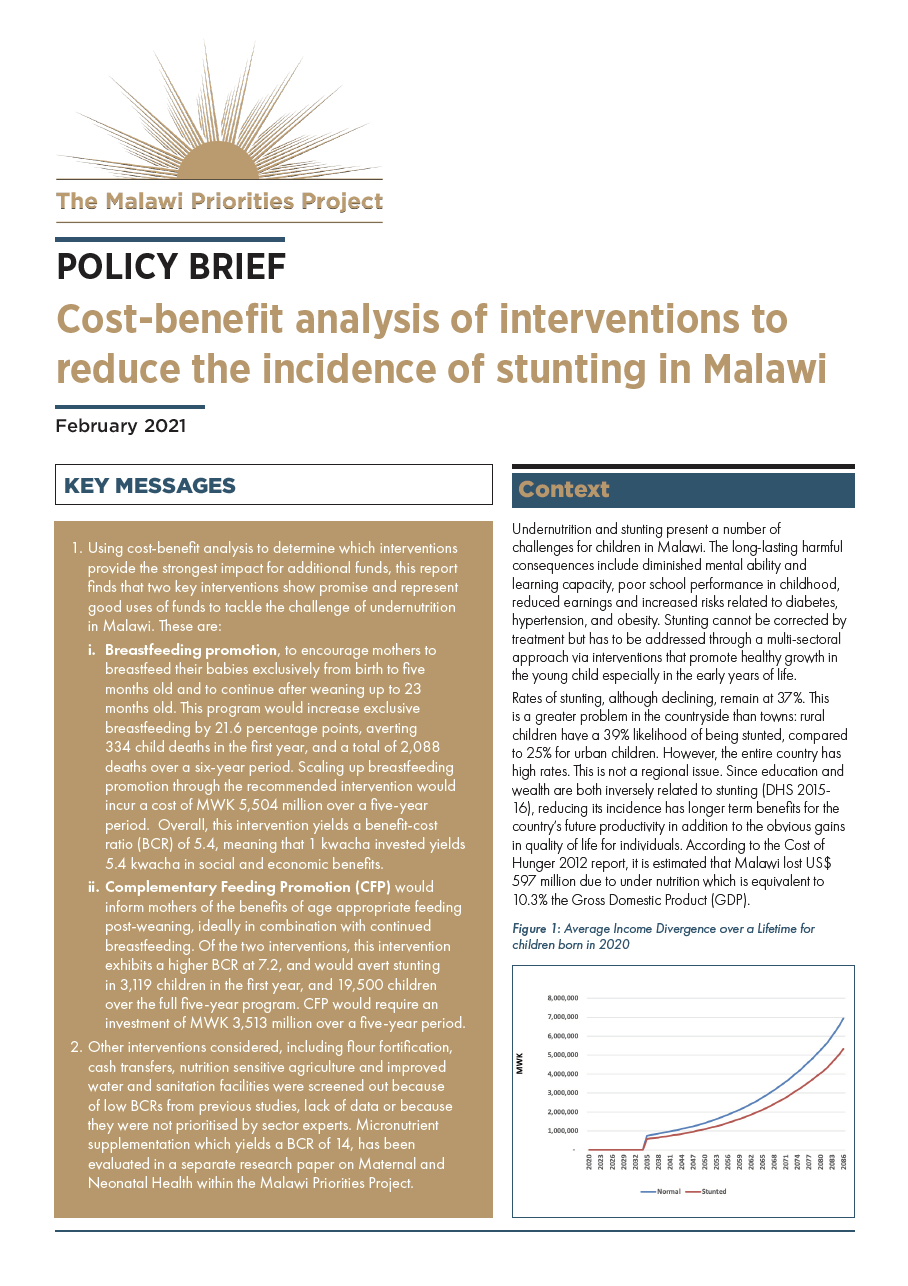
Using cost-benefit analysis to determine which interventions provide the strongest impact for additional funds, this report finds that two key interventions show promise and represent good uses of funds to tackle the challenge of undernutrition in Malawi. These are; Breastfeeding promotion and Complementary Feeding Promotion (CFP).
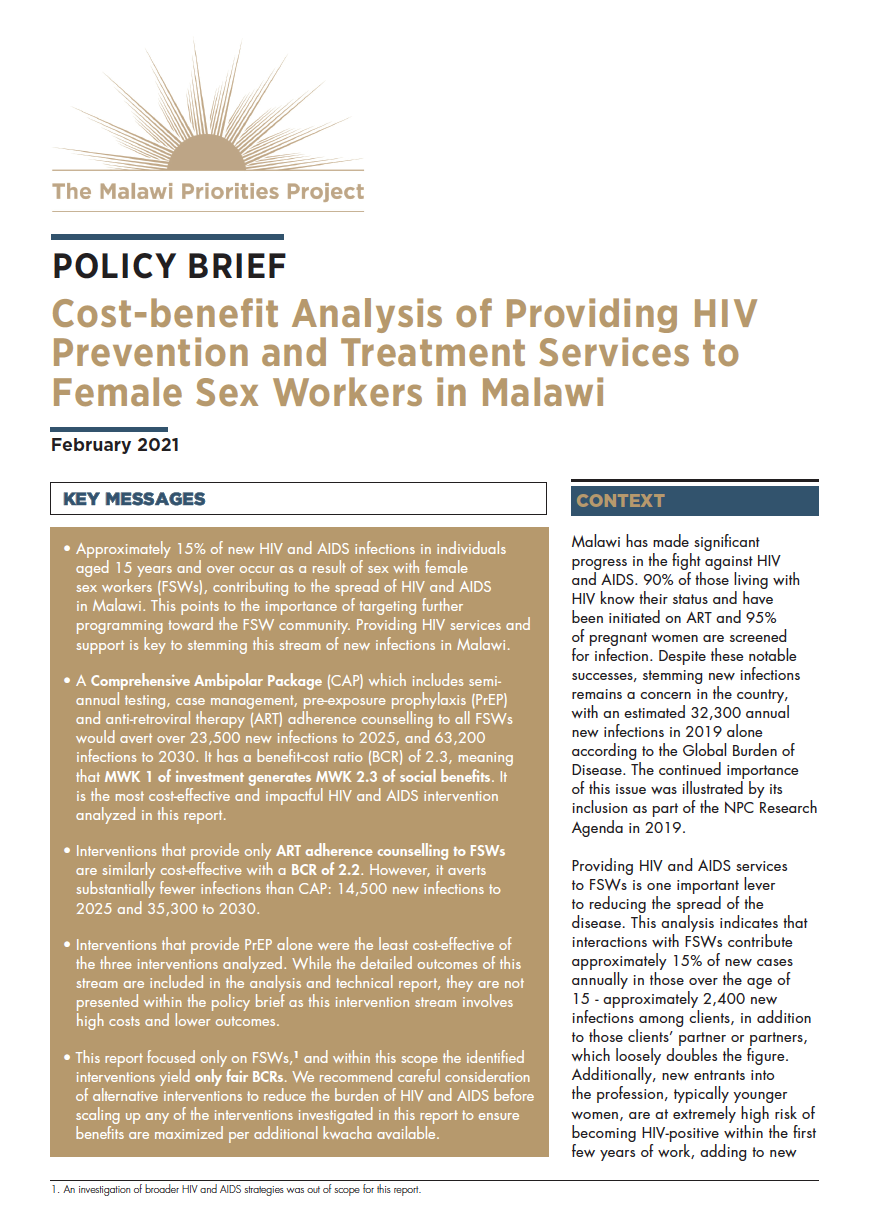
Malawi has made significant progress in the fight against HIV and AIDS. 90% of those living with HIV know their status and have been initiated on ART and 95% of pregnant women are screened for infection. Despite these notable successes, stemming new infections remains a concern in the country, with an estimated 32,300 annual new infections in 2019 alone according to the Global Burden of Disease. Providing HIV and AIDS services to FSWs is one important lever to reducing the spread of the disease.
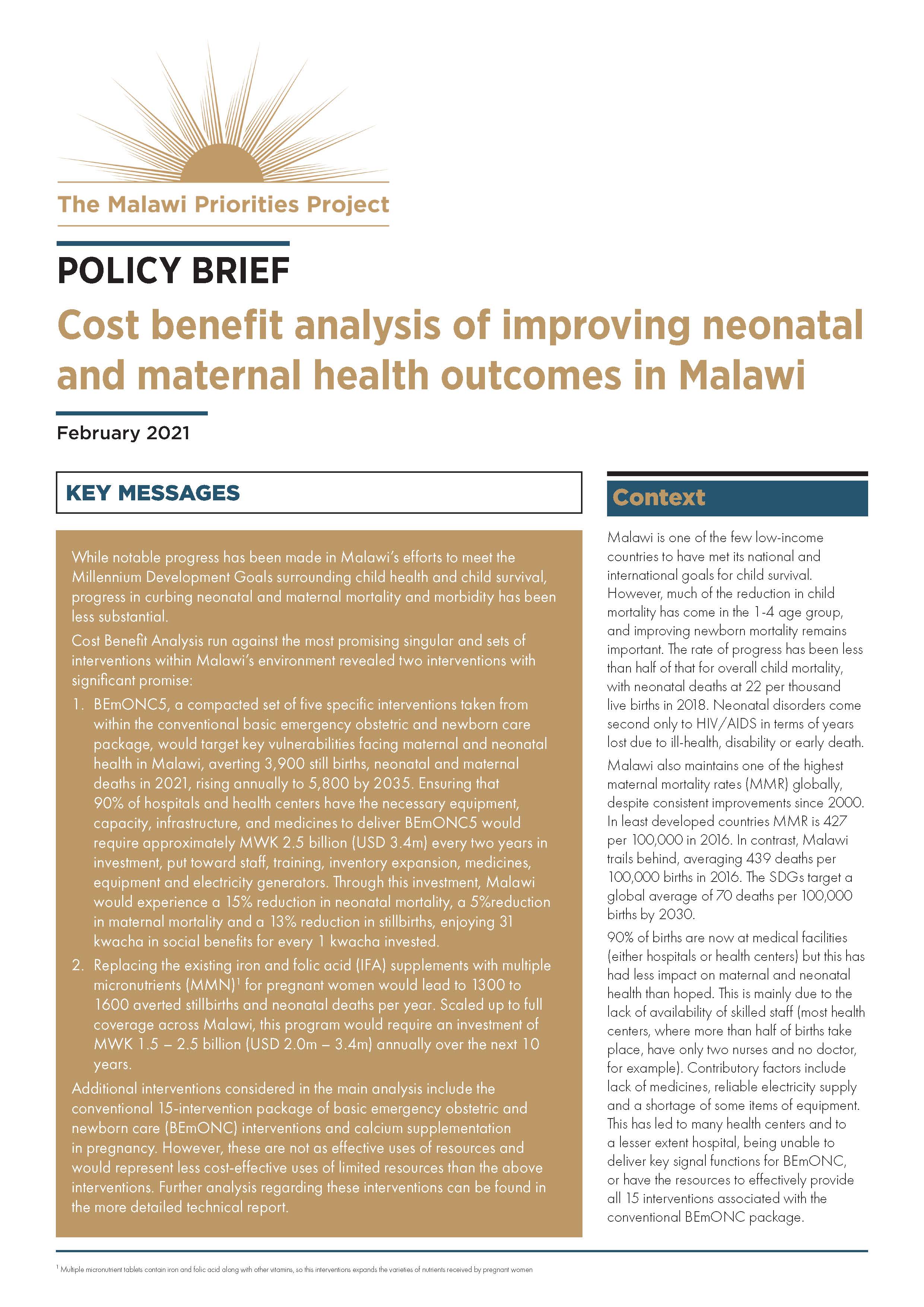
While notable progress has been made in Malawi’s efforts to meet the Millennium Development Goals surrounding child health and child survival, progress in curbing neonatal and maternal mortality and morbidity has been less substantial. The rate of progress has been less than half of that for overall child mortality, with neonatal deaths at 22 per thousand live births in 2018. Neonatal disorders come second only to HIV/AIDS in terms of years lost due to ill-health, disability or early death.
Cost-Benefit Analysis run against the most promising singular and sets of interventions within Malawi’s environment revealed two interventions with significant promise.
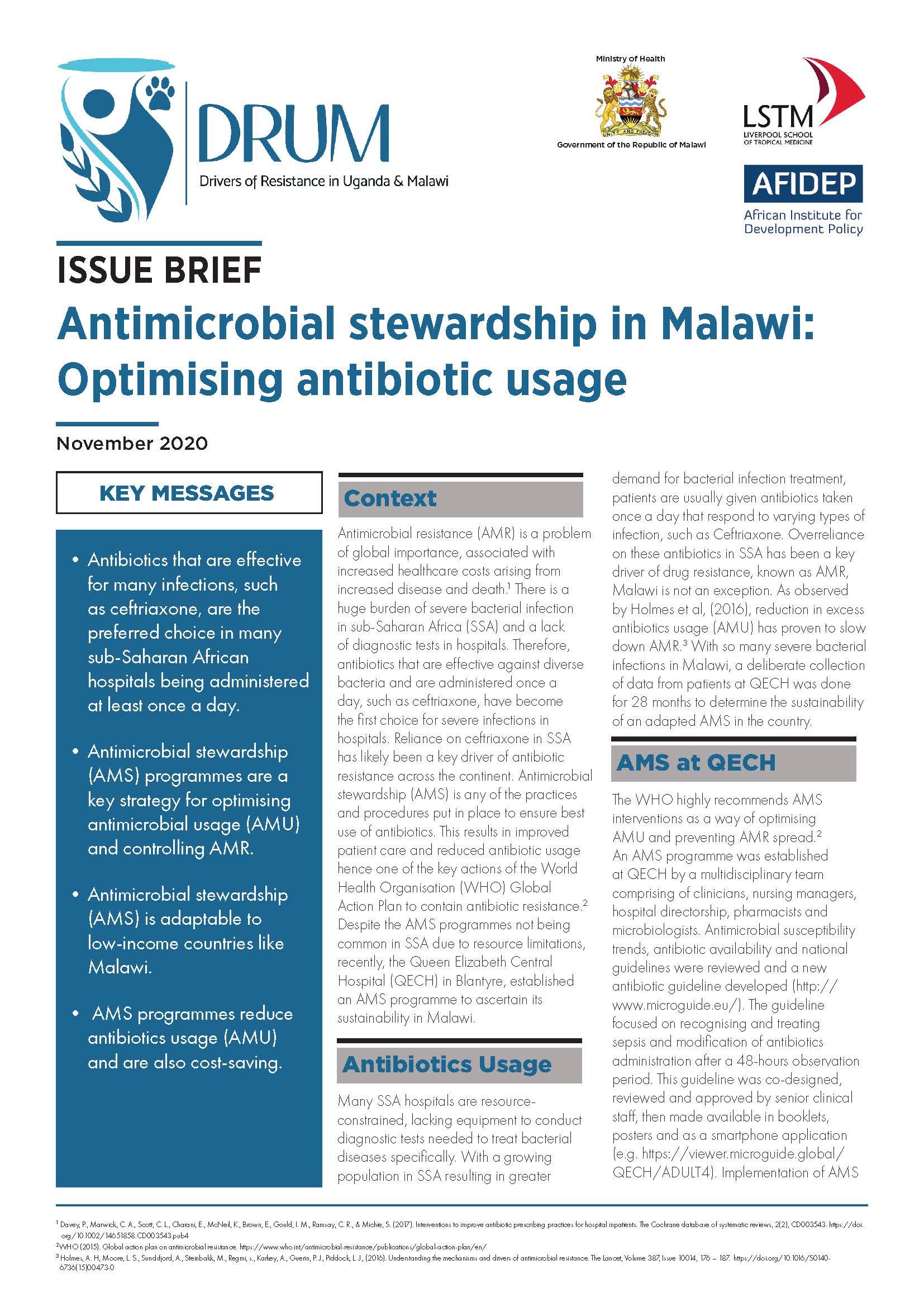
This issue brief has been prepared by the African Institute for Development Policy (AFIDEP) based on the study, “Sustained reduction in third-generation cephalosporin usage in adult inpatients following introduction of an antimicrobial stewardship program in a large urban hospital in Malawi (https://pubmed.ncbi.nlm.nih.gov/32060523/). The work was led by Rebecca Lester and supported by the Drivers of Resistance in Uganda and Malawi (DRUM) Consortium. The study sought to demonstrate the feasibility, acceptability and cost-saving of a stewardship program where resources are limited. With funding from the UK Global Challenges Research Fund, the Liverpool School of Tropical Medicine (LSTM) in 2017 established the DRUM Consortium with the purpose of reducing antimicrobial resistance (AMR) spread in Uganda and Malawi. This issue brief seeks to promote and support the continued investment in antimicrobial resistance solutions.
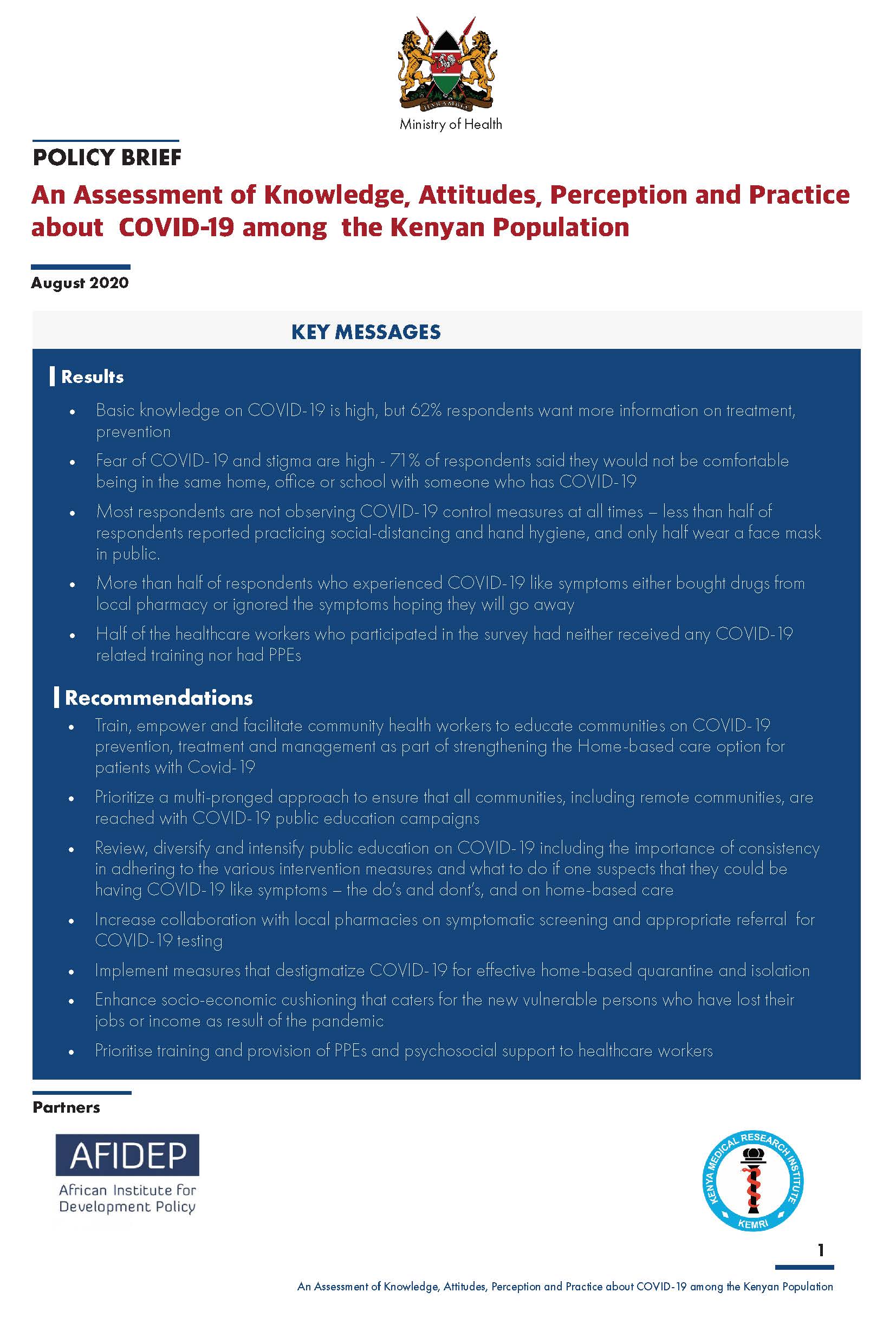
An Assessment of Knowledge, Attitudes, Perception and Practice
about COVID-19 among the Kenyan Population
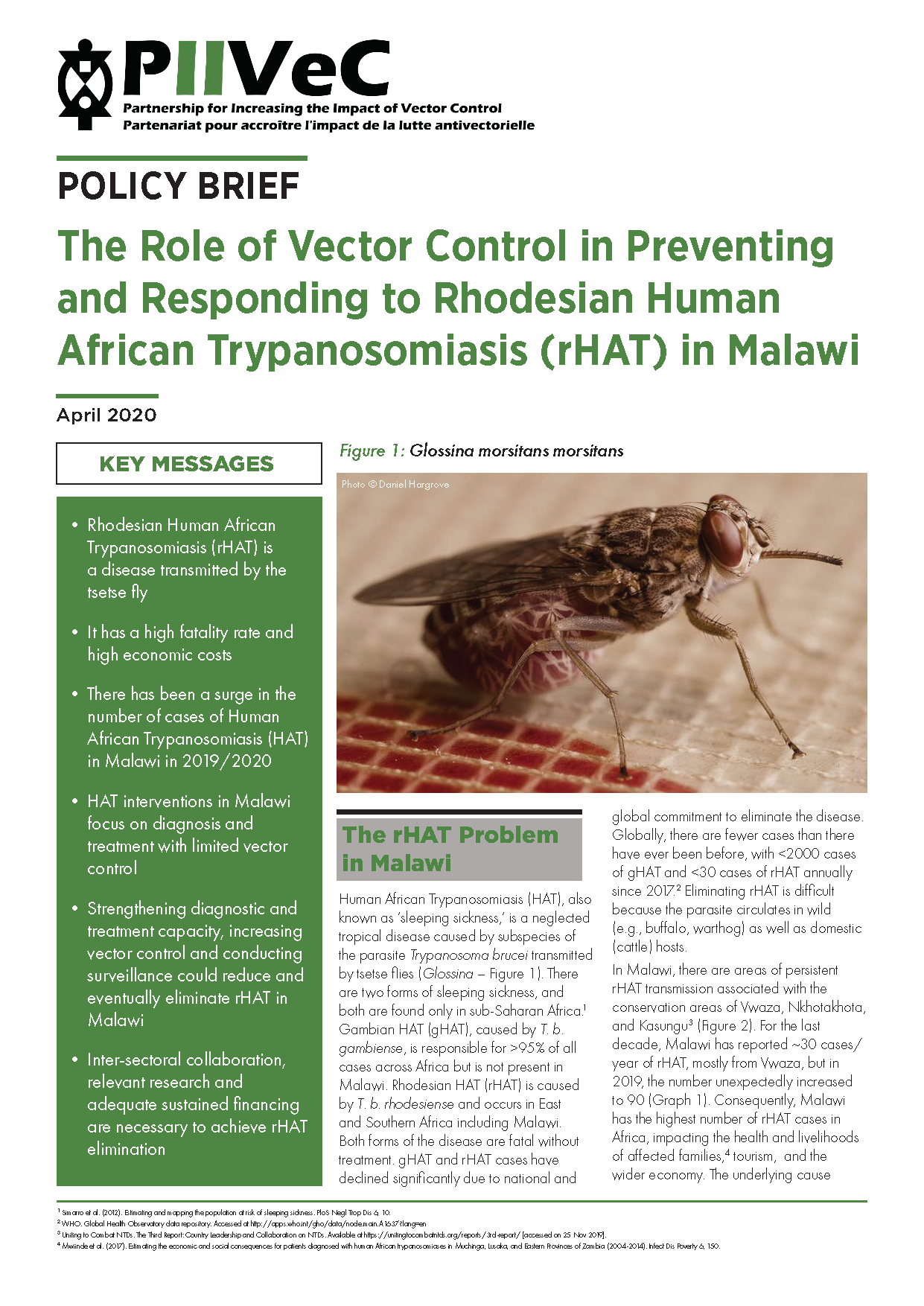
Human African Trypanosomiasis (HAT), also known as ‘sleeping sickness,’ is a neglected tropical disease caused by subspecies of the parasite Trypanosoma brucei transmitted by tsetse flies. There has been a surge in the number of cases of Human African Trypanosomiasis (HAT)in Malawi in 2019/2020. HAT interventions in Malawifocus on diagnosis and treatment with limited vector-control. Strengthening diagnostic and treatment capacity, increasing vector-control and conducting surveillance could reduce and eventually eliminate rHAT in Malawi.
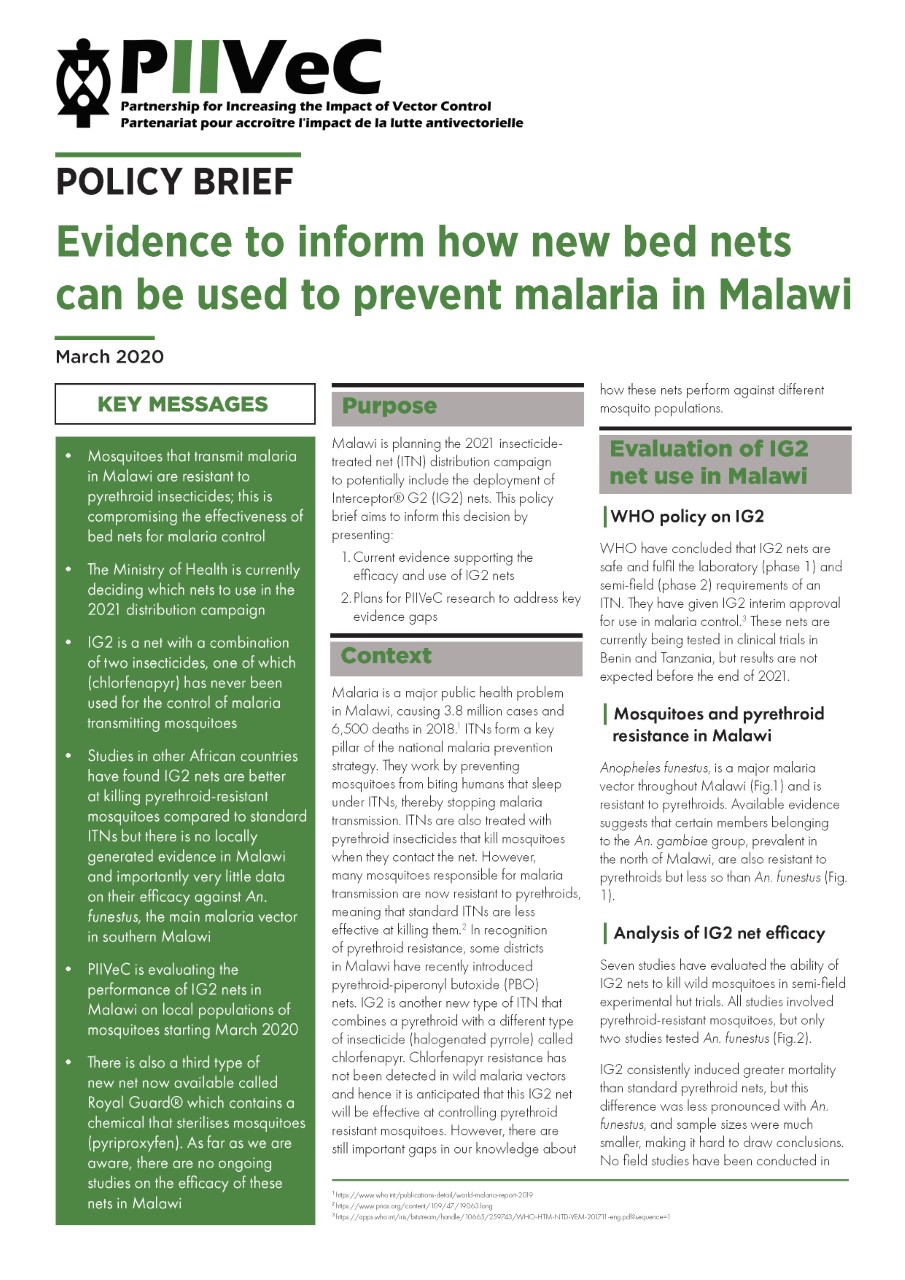
Malawi is planning the 2021 insecticide-treated net (ITN) distribution campaign to potentially include the deployment of Interceptor® G2 (IG2) nets. This policy brief aims to inform this decision by presenting: current evidence supporting the efficacy and use of IG2 nets; and plans for PIIVeC research to address key evidence gaps.

Healthy, well-qualified and highly competent workers are essential for Angola to exploit the potential of its population and enjoy the Demographic Dividend (DD). The dividend demographic is the accelerated economic growth that can occur when a country invests to significantly reduce the high fertility rates, leading to a change in the age structure of the population, leaving a structure where there is a predominance of children dependent for one where there are more people of working age. However, the total economic potential of this age-old population can improve considerably if investments are made in the development of human capital.

Angola’s Long-Term Development Strategy, Vision 2025, aims to lift the country out of poverty by promoting growth economic, macro-economic stability, jobs and equality, taking advantage of the country’s considerable natural resources and its potential to create opportunities for all its citizens. Angola is currently classified as a low-middle income country, with a GDP per capita estimated at US $ 3,879. A growth rate impressive economic performance, averaging more than 10% annually between 2006 and 2010, it reduced to more than half (4.7%) between 2011 and 2015 as a result of the sudden and prolonged decline in oil prices oil, which represent more than 95% of the income from export from Angola. Despite being a middle-income country, Angola faces many socio-economic challenges that have placed it among the low human development countries (ranked 150th 188 countries in 2015).

Angola is a low-middle income country, with an estimated GDP per capita at $ 3,879, an impressive rate of economic growth, averaging more than 10% annually between 2006 and 2010, has reduced more half (4.7%) between 2011 and 2015 as a result of the sudden and international oil prices, which represent over 95% of Angola’s export earnings. The fast population growth has impeded economic growth. Angola has one of the highest fertility rates in Africa sub-Saharan Africa, with an average of 6.2 children per woman. This resulted in high ratio of dependent children, which compromises the perspective of the country to achieve its Vision 2025 objective – reduce poverty promoting economic growth, macroeconomic stability and jobs.

Le sepsis est une maladie mortelle résultant d’une infection sévère et l’une des principales causes de décès évitables dans le monde. Vu l’important fardeau de l’infection, l’Afrique serait affligé par un taux disproportionné de sepsis dans le monde. Les coûts humains et financiers énormes associés au sepsis peuvent être attribués à la sous-priorisation dans les systèmes de santé en termes de ressources, de surveillance et de notification.
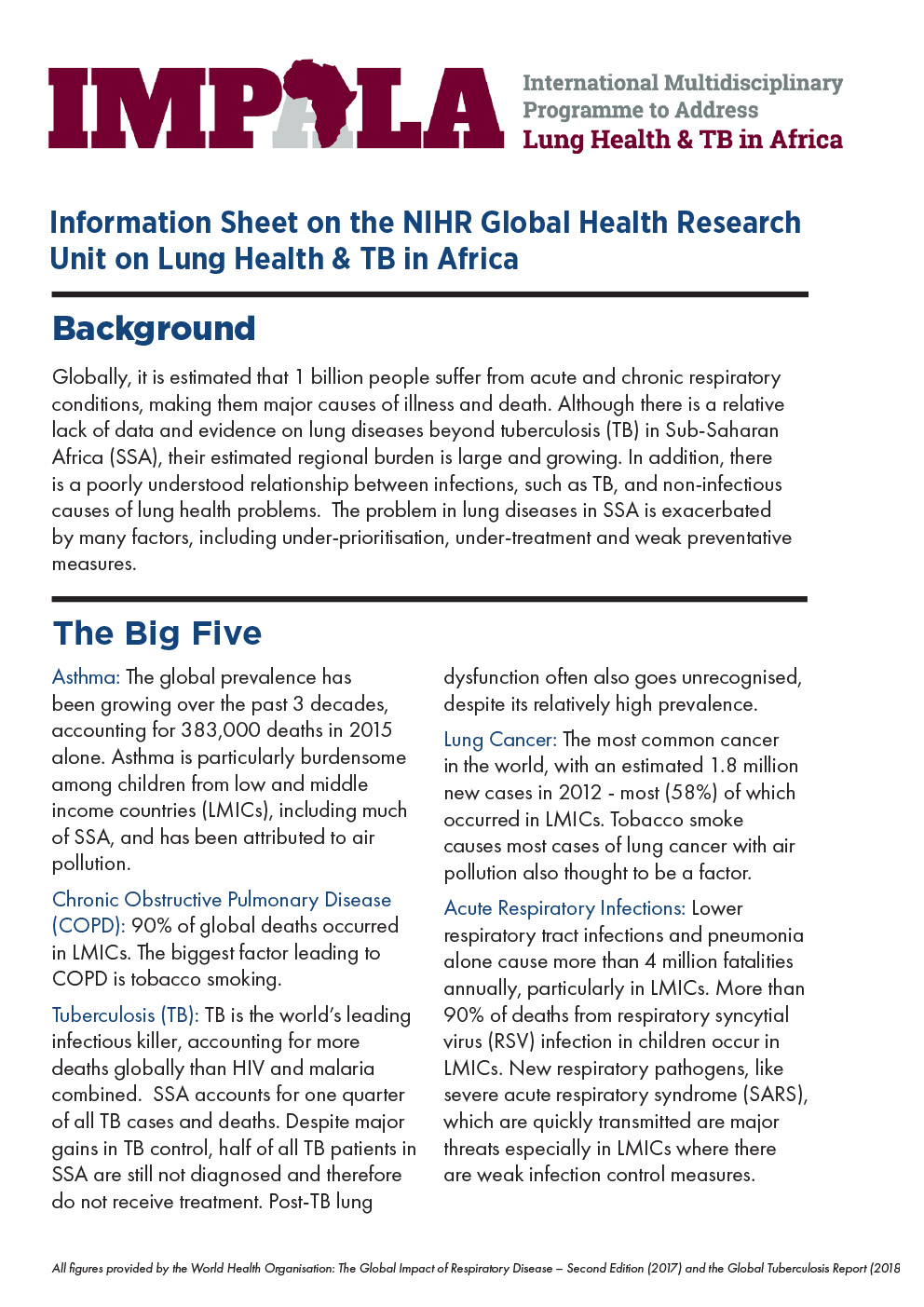
Globally, it is estimated that 1 billion people suffer from acute and chronic respiratory conditions, making them major causes of illness and death. Although there is a relative lack of data and evidence on lung health illnesses beyond tuberculosis (TB) in Sub-Saharan Africa (SSA), their estimated regional burden is large and growing. In addition, there is a poorly understood relationship between infections, such as TB, and non-infectious causes of lung health problems. The problem in lung health diseases in SSA is exacerbated by many factors, including under-prioritisation, under-treatment, and weak preventative measures.

